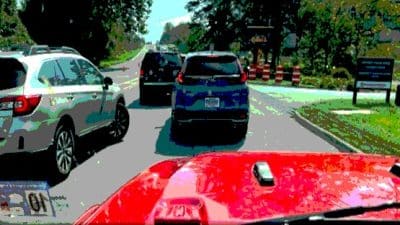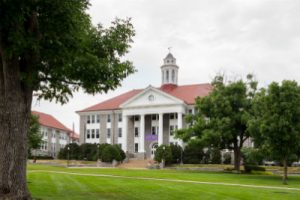Governor Terry McAuliffe celebrated the opening of Virginia’s newest asset in drone technology research – a runway for unmanned aircraft – and then experienced the future of aviation firsthand by flying in a plane that can be piloted from the ground.

“The MARS UAS Airfield presents a significant new capability for Wallops and the Hampton Roads region,”Governor McAuliffe said. “It propels Virginia further on its quest to become a national leader in autonomous technology and industry, which is at the heart of our efforts to build a new Virginia economy.”
Following the ribbon-cutting ceremony, Governor McAuliffe boarded an Aurora Centaur, an optionally piloted aircraft that can be operated remotely from a ground control station, and flew in the plane over Wallops Island.
“This new facility at Wallops provides government and commercial users with a runway under restricted airspace on a secure federal facility – discreetness that is of high interest for research and development,” Virginia Transportation Secretary Aubrey Layne said.
“The new UAS runway is an outstanding and strategic addition to the vast array of unmanned systems assets in the Commonwealth,” said Secretary of Technology Karen Jackson. “The addition of these unique capabilities will provide the opportunity for even more companies and organizations to test their systems in Virginia.”
Additional details about the runway:
- The runway is 3,000 feet long and 75 feet wide.
- Its concrete pad measures 130 feet by 120 feet and is rated to 5,000 psi for Vertical Take Off and Landing (VTOL) operations.
- The airfield is surrounded by 75 square nautical miles of restricted airspace that is available 24 hours a day, seven days a week to unlimited altitude.
- The Virginia Department of Transportation managed construction of the $5.8 million, state-funded project.
- A 90-foot-by-50-foot hangar with a 70-foot-tall rollup door, lab space, communications and broadband connectivity will be under construction this summer.
Dale Nash, executive director of Virginia Space, thanked Governor McAuliffe and Virginia’s legislators for providing funding for construction of the MARS UAS Airfield.
“I also want to thank Secretary Layne and VDOT Commissioner Charlie Kilpatrick for all their support,” Nash said. “With Virginia Space being within the Transportation Secretariat, we were able to draw on their considerable resources. VDOT managed the entire construction of runway from the initial turnover of engineering drawings and permits to the last foot of paving.”
The MARS UAS Airfield is the latest commitment by Virginia to become the home of an array of autonomy-related assets designed to attract business. This investment, combined with programs from NASA at Wallops and Langley, the establishment of the Autonomous Systems Center of Excellence run by the Center for Innovative Technology, and designation of Virginia as one of six FAA test sites for unmanned aircraft systems, will help fulfill the Commonwealth’s mission of being one of the best autonomous hubs of industry in the nation.
According to a study completed by the Association for Unmanned Vehicle Systems International (AUVSI), the UAS industry is predicted to have a total economic impact in Virginia of approximately $270M annually by the year 2020.










